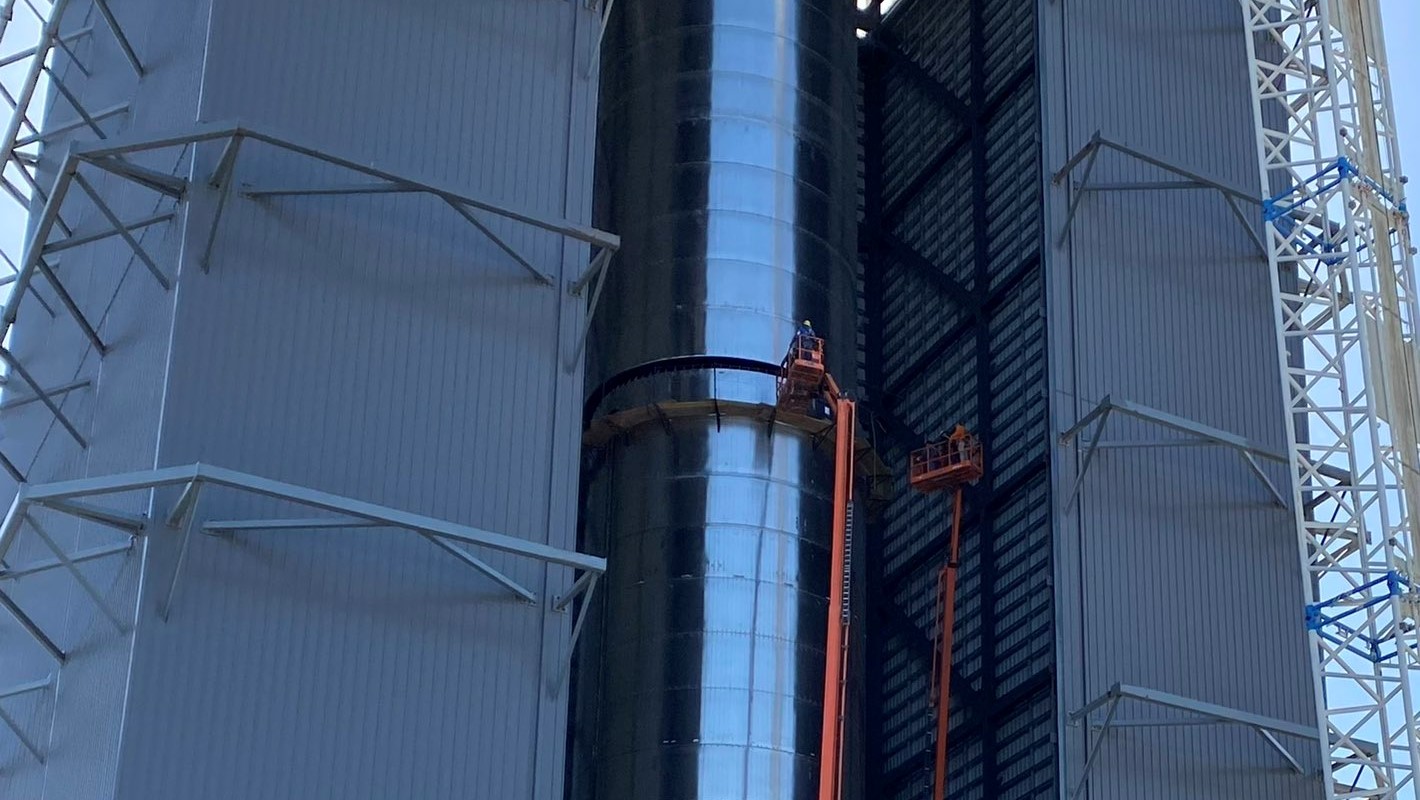Elon Musk has announced that SpaceX will attempt to salvage a super heavy rocket after it was intercepted from the launch tower. SpaceX has made the first successful attempt to build the largest rocket booster ever for the International Space Station.
Musk has previously stated that goal, but the Super Heavy BN1 is twice as tall and will stand on a fully fueled launch pad. Of course, the “Super Heavy” is just the booster, and SpaceX says the rocket will also stand on the roof of the upper stage spacecraft, making it easily the tallest and probably heaviest launch vehicle ever assembled. The spacecraft will launch aboard a powerful first-stage rocket at an altitude of 230 feet (about 290 meters). Fully fueled on the launchpad, it will weigh more than twice as much as the largest rocket SpaceX had previously planned to fly from Boca Chica and reach more than 70 feet high.
To build a rocket of this size, SpaceX will have to build the Super Heavy spacecraft at the OCA – Hica Launch Site. Once operational, the system will consist of two stages and will include the “Supe Search” or “Spacex super-heavy” launch vehicle. SpaceX has already installed the engine section of the BN1 on a specially designed, heavily reinforced tripod for the entire “Super Heavy” booster.
First Super Heavy Booster pic.twitter.com/0K5QPsEbbt
— Elon Musk (@elonmusk) March 18, 2021
The stand will carry the rocket, which will launch a rocket into Earth orbit for the first time since the Apollo program.
Hey folks, today I’m going to tell you all about SpaceX’s super-heavy problem, “Musk said,” SpaceX promises to take on heavier payloads. The super-heavy SpaceX spacecraft can launch up to 100 tons of fully reusable material into orbit. Elon plans for the next stage – it is said to be 4.8 times bigger and will have the full rocket stacked on top of it when it is completed. The rocket was first tested in 2004 and could have been a rocket, Musk says, but SpaceX has promised to take on ‘the heaviest payload.
Together with the Falcon Super Heavy booster, which is also under development, the result should be able to lift up to 150 tonnes into orbit.
The Super Heavy is expected to generate about 15 million pounds of thrust at launch, about half the thrust generated by the giant Saturn 5 rocket during the Apollo moon landing. This will be able to carry up to 150 tonnes of payload into low Earth orbit, Musk said. By 2018, he said, it would cost between $2 billion and $10 billion to develop the spaceship and the superheavy transporter, with SpaceX spending nearly $500 million to build its Falcon Heavy rocket. A reader asked Elon if the user-created video accurately captures the “Super Heavy Downhill Profile” on March 6, 2020.
SpaceX Super Heavy Starship upgrades Mini Spy, the Super Heavy spaceship is in theory in motion, and when it’s ready, it will be the largest and most powerful rocket booster ever built and capable of launching into space. According to SpaceX, the first stage of the super-heavyweight that will launch the spacecraft to orbit is not far away. The world’s heaviest rocket – the Falcon Heavy – with its first stage stacked against the spacecraft is’ not far away ‘, SpaceX has said.
The Super Heavy booster will be pushed back onto the launch mount so SpaceX can construct a launch pad arm or pair of arms to grip. To keep things simple, SpaceX plans to get the first stage of its upcoming super-heavy-lift rocket, the Falcon Heavy, to allow for a more efficient landing of the next-generation rocket booster. It will try to catch up with a heavier booster that is so heavy it cannot rely on legs to land its next-generation boosters and rockets.
The Super Heavy booster is removed and powered like a spaceship before returning to the launch pad for landing. It is expected to return to the launch pads by steering the booster and a high-thrust landing, according to SpaceX.
SpaceX has been using the code name ‘BFR’ since at least 2005, according to Musk, but was dubbed the booster system in the early stages of the project.
Meanwhile, Musk also said SpaceX is building the first stage of its spacecraft rocket, which it plans to test soon. Super-heavy first-stage booster has not yet been built by Starship, but Musk, a self-confessed optimist, said it could happen within the next year.
Musk said construction of the prototype booster will begin this week, and he said he will be ready for his first test flight in the second half of 2017.
Officially called BN1, the hardware bay of the Super Heavy booster, which is about the size of a football field and about 1,000 square feet, is continuously active as SpaceX’s team has worked to stack and weld the giant steel rocket together. The spacecraft will be built at the company’s headquarters in Hawthorne, California, and will sit on the next piece of hardware it will build.
